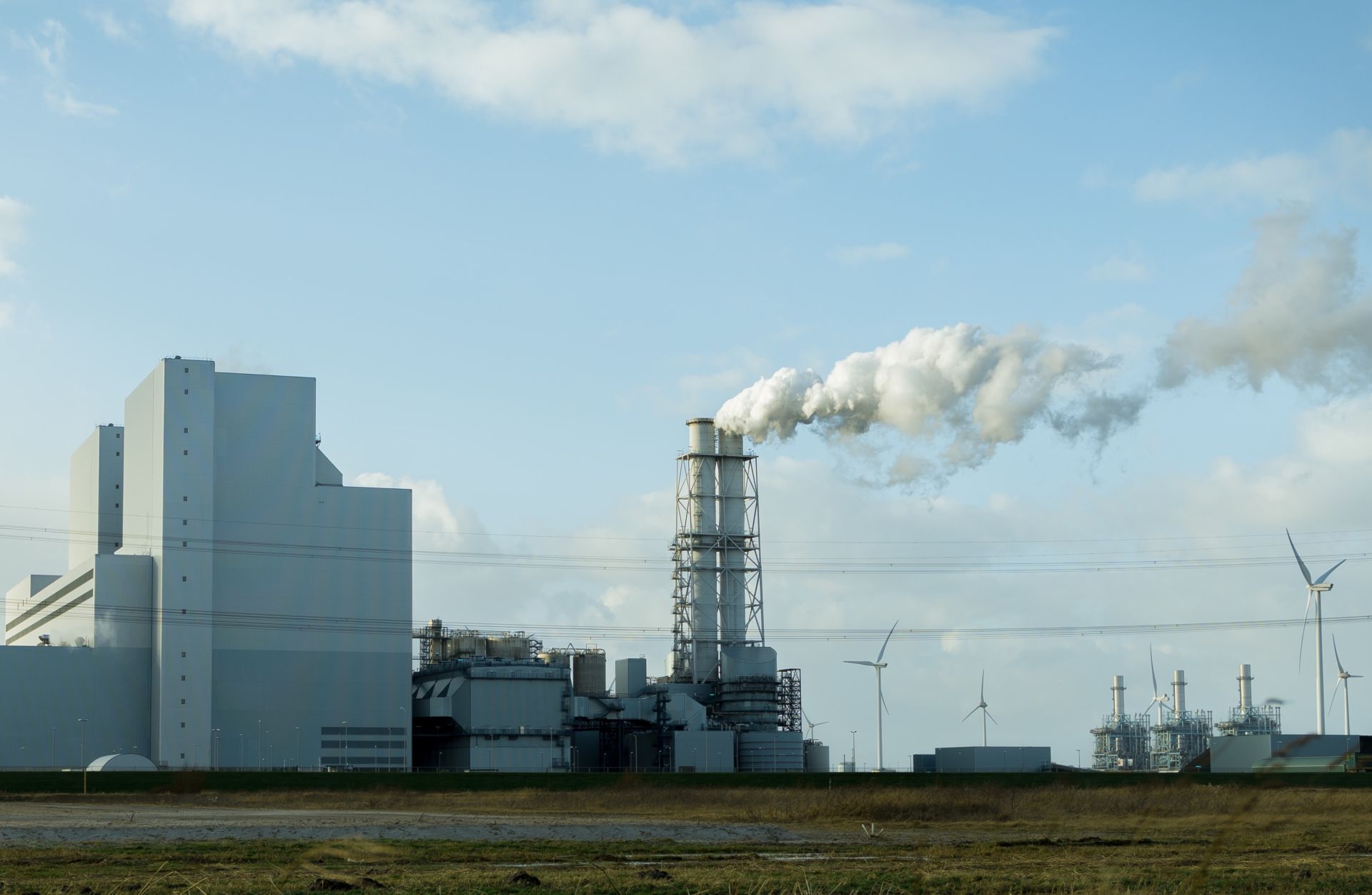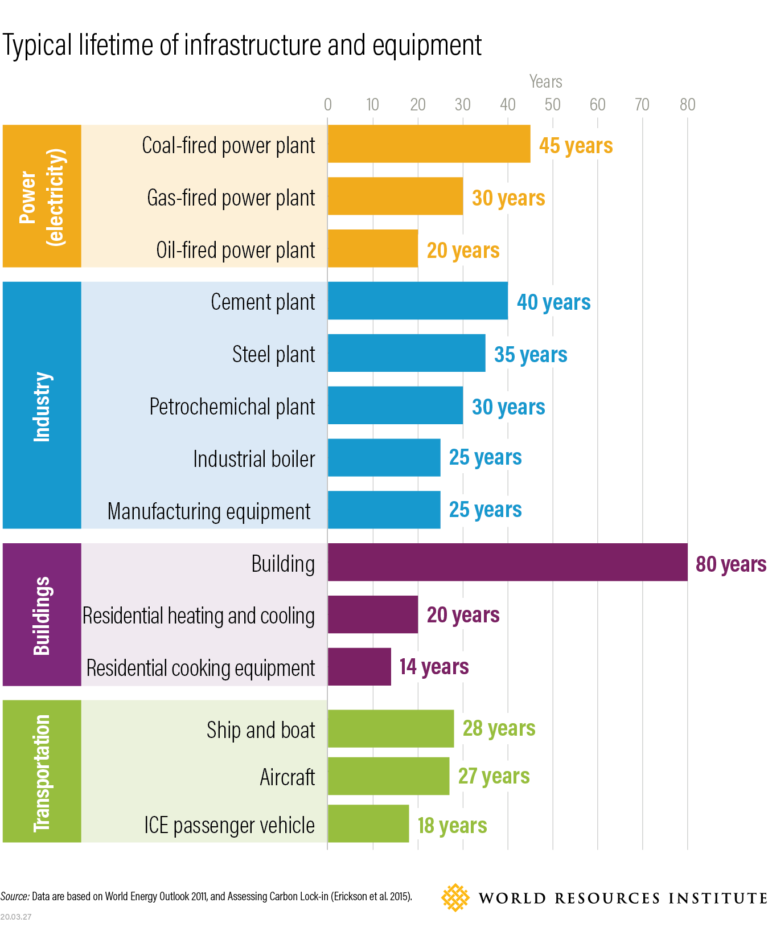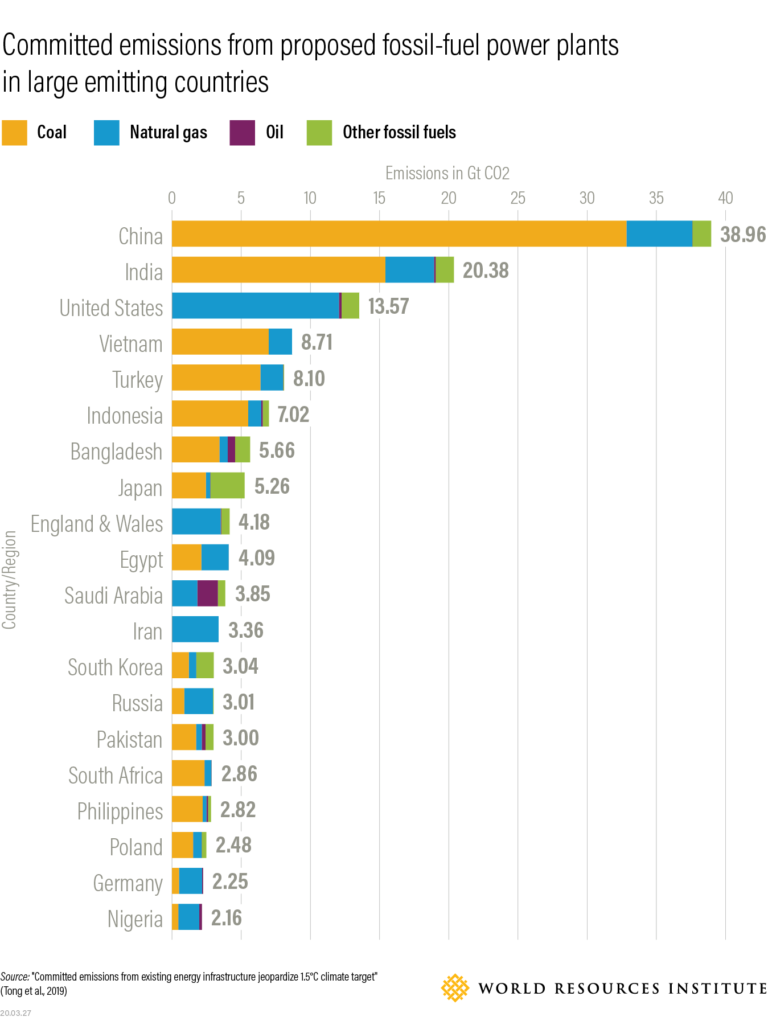Put yourself in the shoes of a government planner, power company executive, school superintendent, manufacturer or homeowner. You need to buy an expensive piece of equipment that could be used for decades to come. Spending on projects like power plants, boilers, buildings, vehicles and other types of infrastructure is always an exercise in current budget versus longer-term considerations. In this balancing act, climate change is one of the most important factors to take into account.
Investing in the wrong infrastructure can result in “carbon lock-in,” whereby planners commit themselves to a certain amount of greenhouse gas emissions for the lifetime of the infrastructure — oftentimes years or even decades.
Here’s a deeper look at what carbon lock-in is, and how we can avoid it.
What Is Carbon Lock-in?
Carbon lock-in occurs when fossil fuel-intensive systems perpetuate, delay or prevent the transition to low-carbon alternatives — a situation that can seriously imperil climate action. Science shows that to avoid the most catastrophic effects of climate change, the world needs to limit global warming to 1.5 degrees C (2.7 degrees F) above pre-industrial levels and achieve net-zero carbon dioxide emissions by mid-century. A recent study estimated the committed greenhouse gas emissions from existing infrastructure (coal-fired power plants, pipelines, gas-powered vehicles, etc.) and found that the world’s remaining “carbon budget”— the amount we can emit and still keep temperature rise to 1.5 degrees C — will be fully used up by what’s already built. That means that in order to limit temperature rise to safe levels, we need to avoid new carbon-intensive infrastructure and consider early retirement of existing high-emissions infrastructure.
Carbon lock-in can take place in every sector and industry, and from the local to global level through multiple types of mechanisms. The overarching point, however, is that once intentionally long-lived infrastructure, facilities and equipment are installed, it can take years or even decades before they are eventually replaced. If they are carbon-intensive, their lifetime greenhouse gas (GHG) emissions become enormous.
How Long Is Infrastructure Supposed to Last?
When considering the types of carbon-intensive infrastructure and equipment that are susceptible to the carbon lock-in problem, it is first important to understand just how long these investments are expected to last. As demonstrated in the figure below, the typical lifetime of different infrastructure and equipment types varies from 80 years for buildings to 14 years for residential cooking equipment, with a median typical lifetime of 27.5 years.
Based on the median life expectancy, the infrastructure and equipment we install in 2021 will continue operating until mid-way through 2049, just around the time the world must reach net-zero emissions. This helps put into perspective the power of the decisions made today in influencing the nature of our future economy. Carbon-intensive investments made now are built to last.
What is the Difference Between Fossil Fuels and Renewable Power Plants with Respect to Carbon Lock-in?
Between now and 2030, $90 trillion will be invested in infrastructure; what sort of infrastructure and equipment we invest this money in, however, makes a critical difference.
Suppose a power utility company needs to install new power plants to meet growing electricity demand. The type of power plants that are ultimately built will have very different long-term impacts.
The graphic below visualizes the difference in the committed emissions from different types of power plants installed today, assuming the same amount of electricity is supplied every year by each plant throughout their respective lifetimes. The difference is striking, and reflects the concerns associated with fossil/carbon-intensive plants (coal and gas-combined cycle) as compared to lower carbon alternatives (hydropower, nuclear, offshore and onshore wind, and solar PV).
Over its 50-year lifetime, for example, a nuclear plant is projected to produce just 12 grams of greenhouse gases per kilowatt-hour (gCO2eq/kWh), while a fossil-based coal plant with a 45-year projected lifetime will produce 68 times that (820 gCO2eq/kWh). Similarly, a natural gas-combined cycle plant built to last 30 years will produce more than 40 times the emissions (490 gCO2eq/kWh) than an offshore wind facility with a 25-year lifecycle (12 gCO2eq/kWh).
Which Countries Are Still Investing in Building New Carbon-intensive Infrastructure?
Despite the grim implications, more and more fossil-fuel-fired power plants are being built, locking the world into a carbon-intensive future. Indeed, recent analysis examining the estimated total lifetime emissions from new fossil-fuel power plants that were planned, permitted or under construction at the end of 2018 indicates that the countries with the largest committed emissions from such plants are not only today’s largest emitters, but also fast-growing emerging economies across the globe.
China, the United States and India (the world’s top three emitters) also lead the world in the amount of committed emissions from proposed fossil power plants. Simultaneously, emerging economies in Asia, the Middle East and Africa continue to invest in building new carbon-intensive infrastructure, guaranteed to bring about a more carbon-intensive future.
How Can We Avoid Carbon Lock-in?
Considering the long-term emissions implications of infrastructure spending decisions is not only the responsibility of power utilities — it’s an important decision for all economic actors. Leaders of governments, businesses and households must be conscious of the long-term climate implications of the investment and purchase decisions they make today.
There are various measures to prevent and overcome carbon lock-in that will need to be applied in combination to tackle the complex and persistent challenge this issue poses.
Related Articles: Unpacking the US CLEAN Future Act | How Do Countries’ New Emissions-reduction Plans Stack Up?
Most simply, of course, is a do-no-further-harm commitment that governments can make to avoid new carbon-intensive development in the first place. While this objective can certainly be daunting, green alternatives to carbon-intensive infrastructure are becoming more and more cost competitive with conventional fossil-based technologies.
For example, more than half of the renewable capacity added in 2019 (before the COVID-19 pandemic) had lower power costs than even the cheapest new coal production facilities. COVID-19 recovery spending, moreover, offers an immediate opportunity for countries and local governments to invest in clean energy infrastructure to jumpstart the zero-carbon economy.
For example, Nigeria — traditionally the largest oil and gas producer in Africa— has implemented a COVID-19 stimulus package that includes spending $619 million on solar home system, aiming to provide access to solar and mini-grids for 5 million households.
When it comes to breaking carbon lock-in associated with existing carbon-intensive investments, countries have options as well. Momentum is growing for economic measures that limit lock-in and its effects, such as subsidy reallocation and bans on high-emitting infrastructure and equipment.
A WRI expert perspective authored by Stockholm Environment Institute experts, for example, describes a growing number of cities banning natural gas connections in buildings to prevent continued operation of this carbon-intensive infrastructure. Critically, these measures should be accompanied by transition-support mechanisms aimed to ensure workers in fossil-based industries are not disproportionately affected during the shift to cleaner infrastructure.
Stockholm Environment Institute experts also note that carbon-lock in can be broken through a process known as deinstitutionalization, “whereby the supportive cultural norms and governance systems that help an industry remain dominant are broken down.”
Similarly to the historical case of societal pushback against the pesticide DDT (which was banned in the United States following public awareness of its harm), social movements and even norm-shifting championed by prominent individuals can build support for the phasing out of fossil-based infrastructure and equipment. In the United Kingdom, for example, some have cited Extinction Rebellion’s 2019 protests as crucial for pushing the country towards legislating a net-zero emissions target.
Ultimately, to achieve net-zero emissions by mid-century, it is the responsibility of all societal actors to adopt a “2050 is now” mindset, committing to make decisions in the present that are consistent with the future we want.
For more information about what carbon lock-in is and how we can effectively prevent it, read WRI’s Expert Perspective series on the subject.
— —
About the authors: Beth Elliott works with WRI’s Air Quality team to communicate the public health, economic and environmental benefits of reducing air pollution. Clea Schumer is a Research Analyst with WRI’s Climate Program, where she supports the research, analysis, and outreach efforts of WRI projects focused on raising national ambition in accordance with the Paris Agreement.
Editor’s Note: The opinions expressed here by Impakter.com columnists are their own, not those of Impakter.com — In the Featured Photo: A factory in Eemshaven, The Netherlands. — Featured Photo Credit: Nick van der Ende.













